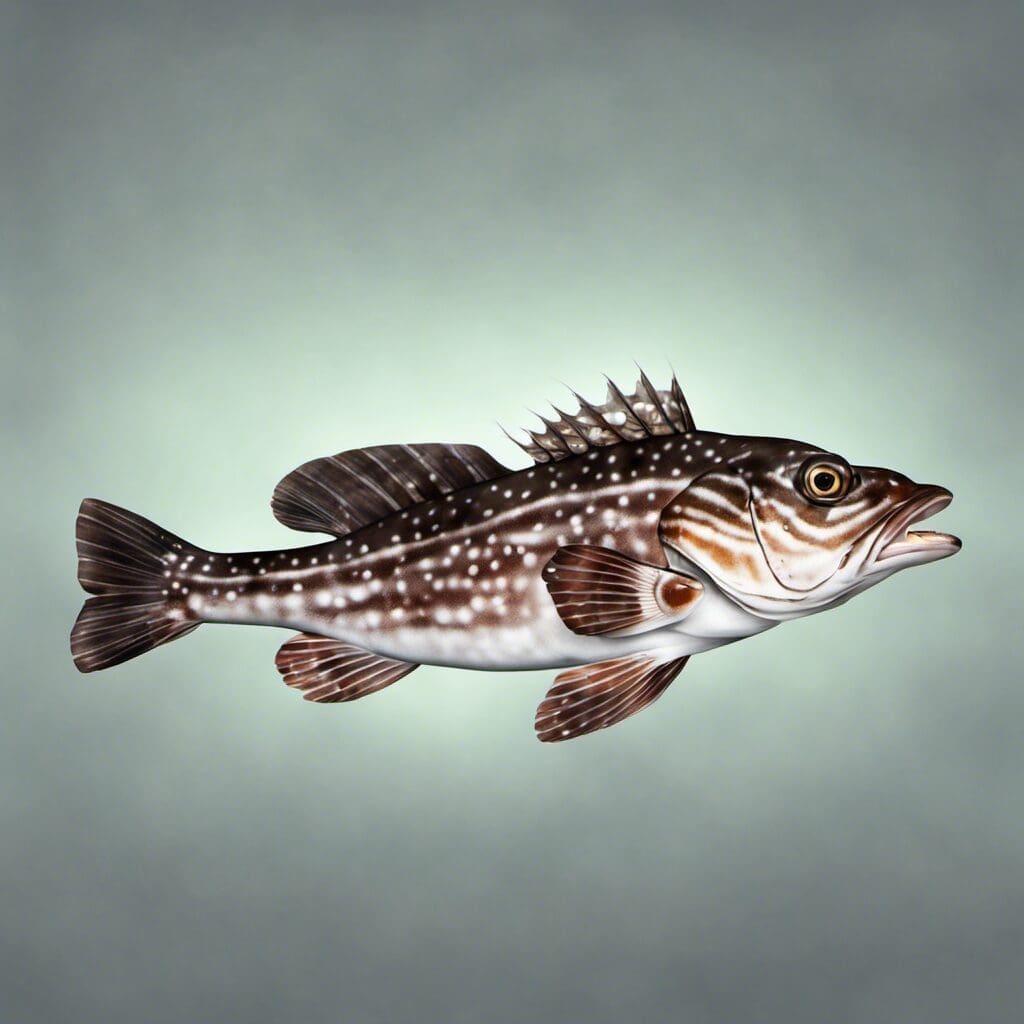Introduction
The Whitespotted Greenling (Hexagrammos stelleri) is a species belonging to the Hexagrammidae family. It is a marine, carnivorous species that is intriguing to anglers due to its uncommon occurrence.
Conservation Status
Currently, the conservation status of the Whitespotted Greenling is not officially evaluated. As such, there aren’t any ongoing conservation efforts specific to this species.
Statistics
| Characteristic | Average | Range |
|---|---|---|
| Length | 30 cm | 10-50 cm |
| Weight | Not Specified | Not Specified |
| Average Lifespan | 15 Years | 10-20 Years |
Distribution
The Whitespotted Greenling is predominantly found in North Pacific oceanic regions, spanning from the Sea of Okhotsk to the Bering Sea, and lower Alaska down to Southern California.
Habitats
The Whitespotted Greenling is a marine species that dwells in nearshore rocky areas and kelp forests. They typically inhabit shallow waters within depths ranging from 0 to 30 meters. They can thrive in cold waters with temperatures ranging from 1 °C to 10 °C.
When and Where to See
Anglers are most likely to spot the Whitespotted Greenling during the spring and summer months. They are particularly active during the day.
Best Fishing Locations and General Tips
Top locations for fishing Whitespotted Greenling include:
- Monterey Bay, California
- Prince William Sound, Alaska
- Salish Sea, British Columbia
- Puget Sound, Washington
- Hood Canal, Washington
When in unknown locations, anglers should explore nearshore areas with rocky bottoms and swaying kelp forests.
How to Catch
Preferred bait includes small crustaceans and invertebrates. Sportfishers often use jigs, plastic worms, or flies for luring. Bottom fishing is a popular technique for catching Whitespotted Greenling, with early morning and late evening proving to be the most productive times.
Identification Guide
Whitespotted Greenling can be identified by their elongated bodies and small mouths. They are typically brown or grey in color sprinkled with numerous small, white spots. The anal and dorsal fins exhibit a yellowish tone.
Culinary
Whitespotted Greenling has a distinctive, mild flavor and a tender texture. It pairs well with flavors like lemon, garlic, and fresh herbs. High in protein, low in total fat, and a good source of potassium and vitamin B, it offers nutritional benefits beside its culinary appeal.
Additional Information
Whitespotted Greenling is a predatory species, known for their solitary and territorial behavior. They feed mostly on small crustaceans, molluscs, and fish. The main natural predators of Whitespotted Greenling include various species of seals, larger fish, and seabirds.
References and Further Reading
- FishBase – Species Summary
- Animal Diversity Web – Hexagrammos Stelleri
- SeaLifeBase – Hexagrammos Stelleri

